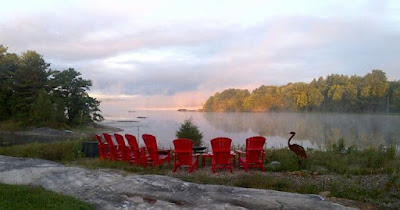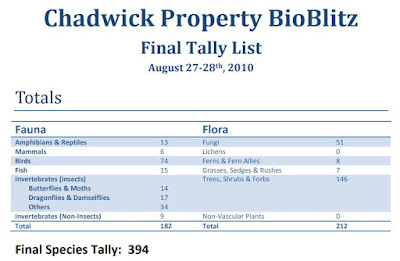I recently attended a meeting of local residents considering the possibility of forming a lake association. The question was asked:
Thirty seconds were allotted for the response so that the forty or fifty people in attendance could all get a chance to voice their favourite thing. That was not enough time. My ten-second response boiled down to "I Love Weather" Please let me explain.
As Dorothy said, "There is No Place Like Home." Place has always been vitally important to us. If you are happy in your own skin and your environment, there is no reason to go anywhere. Travel is not as much fun as it used to be anyway. We spent more than twenty years looking before finding our Sanctuary at Singleton Lake. That time and effort devoted to searching was well spent … along with all of our savings.
The boundaries of our search area were defined mainly by the weather. As with every reliable forecast, one must start with the big picture before you can drill down to the specifics. Climate change was thus the starting point and those parameters were well established even in 1980 when the legwork began.
 |
| Another way of graphing the Global Temperature variations since the days of Christ. There is nothing natural about these anthropogenic trends. |
 |
| Looking at recent history, the global temperature anomaly for every month from 1880 to 2021. Frankly, the data since the Industrial Revolution is overwhelming! |
Simply, the planet was going to warm with the accelerating release of greenhouse gases (GHG). Initial melting of snow and ice over the poles would result in unequal warming as polar reflective surfaces were turned into dark soils that absorbed the sun's energy. The poles would warm at rates exceeding four times that of the rest of the globe. The temperature gradients between the equator and poles would weaken. The jet stream driven by this contrast in latitudinal temperature would also slow down and evolve into a high amplitude meandering current. The weakened jet stream favours a seven-wave pattern along a mid-latitude path around the Globe. See Wave Number 7.
 |
| The persistent long-wave pattern as revealed in the temperature anomaly chart. |
The macro-scale forecast pointed us to search for home in "Eastern Ontario". It was time to drill down beyond climate change and consider other important weather factors.
Severe convection is an important concern. Having spent a career seeing what supercellular thunderstorms might do to a home, convection was a vital forecast parameter.
 |
| The lake breeze convergence lines cast "convective shadows" along the shores of the Great Lakes often extending inland 100 km from the water's edge. |
 |
| Right movers coming off the tip of the Lake Ontario convergence line tend to make the turn for stage right and move southeastward near Athens |
This Lake Ontario Lake Breeze convection line was the northern edge of our search area
Summer weather might be scary and more exciting but winter weather actually has more societal impact. I had worked long shifts during the "The Ice Storm of 1998". Freezing rain and ice accretion are not to be taken lightly. Freezing rain in the Ottawa Valley and along the St. Lawrence provide both the eastern and southern boundaries for our search area.Winter snowsqualls were another concern. It is best to be able to see the hood of your car when you are driving. Whiteouts are potentially lethal. The only lake-induced snowsqualls that impact eastern Ontario must originate from Lake Ontario. The Arctic air must both be sufficiently cold and the low-level winds properly aligned to generate snowsqualls. The orientation of Lake Ontario encourages westerly winds that can inundate the Tug Hills of New York State with paralyzing snow accumulations. Only southwesterly winds can direct snowsqualls down the St Lawrence River Valley. As the winds turn more to the south, the snowsqualls tend to lose their alignment and become warmer as well. Winds of 230 degrees or less are not effective snowsquall generators. Snowsqualls provide a refinement on the southern boundary of the search area.
When all of the above climate and weather factors are considered, the resulting search area becomes the Goldilock Triangle of Eastern Ontario. The climate and weather had narrowed our search window considerably.
The summer Lake Ontario lake breeze front defined the northern edge. The right-moving supercells tracking southeast around Athens were the eastern flank of the search area. The 230-degree vector from Kingston and the west end of Lake Ontario was the limit to the south. The major highways completed or reinforced the western and southern boundaries. We did not wish to play in the traffic.
I had never explored the Goldilock Triangle of Eastern Ontario as a kid with my canoe. Not too hot… not too cold (but enough to freeze out the spongy moth at minus 29 Celsius in the winter) ... supercellular convection less likely.. . snowsqualls improbable ... long-duration freezing rain rare if at all... The area was just right as Goldilocks would say.
There are other considerations as well. They all seem to come down to conditions that are not natural and impact the senses.
- Enjoying a really dark night sky with millions of stars in view is important. A starry, starry night was important to Vincent as well. Light pollution is becoming more invasive as populations grow.
- No multi-lane, busy highways nearby. Sound pollution can be a problem and sound can carry great distances under a nighttime or frontal inversion (although my hearing loss might mitigate that.)
- Visual pollution includes almost anything that is not natural. Signs, signs, everywhere a sign was a favourite song by the Five Man Electrical Band from my youth.
- We have been in areas where you can actually taste and smell the air you are breathing. Not good.
The area in question was also in the centre of the north-south nature corridor linking the Adirondacks to Algonquin and the wild watersheds of western Quebec including the famed Dumoine. Several groups were already active in the area. Linda and I share the missions of these organizations.
- Cataraqui Region Conservation Authority
- Leeds-Grenville Stewardship Council:
- United Nations Educational, Scientific and Cultural Organization, UNESCO;
- Frontenac Arch Biosphere, FAB;
- Algonquin to Adirondacks Conservation Association, A2A; and
- Canadian Parks and Wilderness Society, CPAWS.
 |
| Frontenac Arch Biosphere and the Queens University Biological Station |
 |
| Algonquin to Adirondacks Conservation Association, A2A |
 |
| Singleton Lake was even absent on many of the maps we had been using in our search. |
Our goal was to have a minimal footprint, build efficiently and green and then work in harmony with nature. That included planting thousands of trees, erecting hundreds of birdhouses, protecting turtle nests and creating habitats for all kinds of species that share the land with us. 
The Singleton Sanctuary is surrounded by unique and rare environments that deserve respect and conservation. The BioBlitz of 2010 identified almost 400 species that we share the ecosystem with. That number has hopefully increased since 2010 due to the efforts undertaken. Some disease-resistant butternut trees we have planted still have not shown signs of being infected by the canker - sadly, some have.
- Cerulean Warbler (SC
- Grass Pickerel (SC)
- Bald eagle (SC)
- Monarch (SC)
- Butternut (END)
- Stinkpot (THR)
- Map turtle (SC)
- Ratsnake (THR)
As an added bonus, the Singleton Sanctuary is also in the middle of the path of mid-latitude synoptic-scale storms... the perfect place to be for an artist and meteorologist! The weather is different and inspiring every day.
We are all stewards of the land, privileged to appreciate its beauty during our lifetime but responsible for leaving the environment better off for the future and all inhabitants...
 |
| The Singleton Sanctuary is equally special in the winter. |
"I Love The Weather.." was the short answer provided. The above was the long answer and closer to the whole truth and nothing but the truth... so help me...
Warmest regards and keep your paddle in the water,
Phil the Forecaster Chadwick






No comments:
Post a Comment